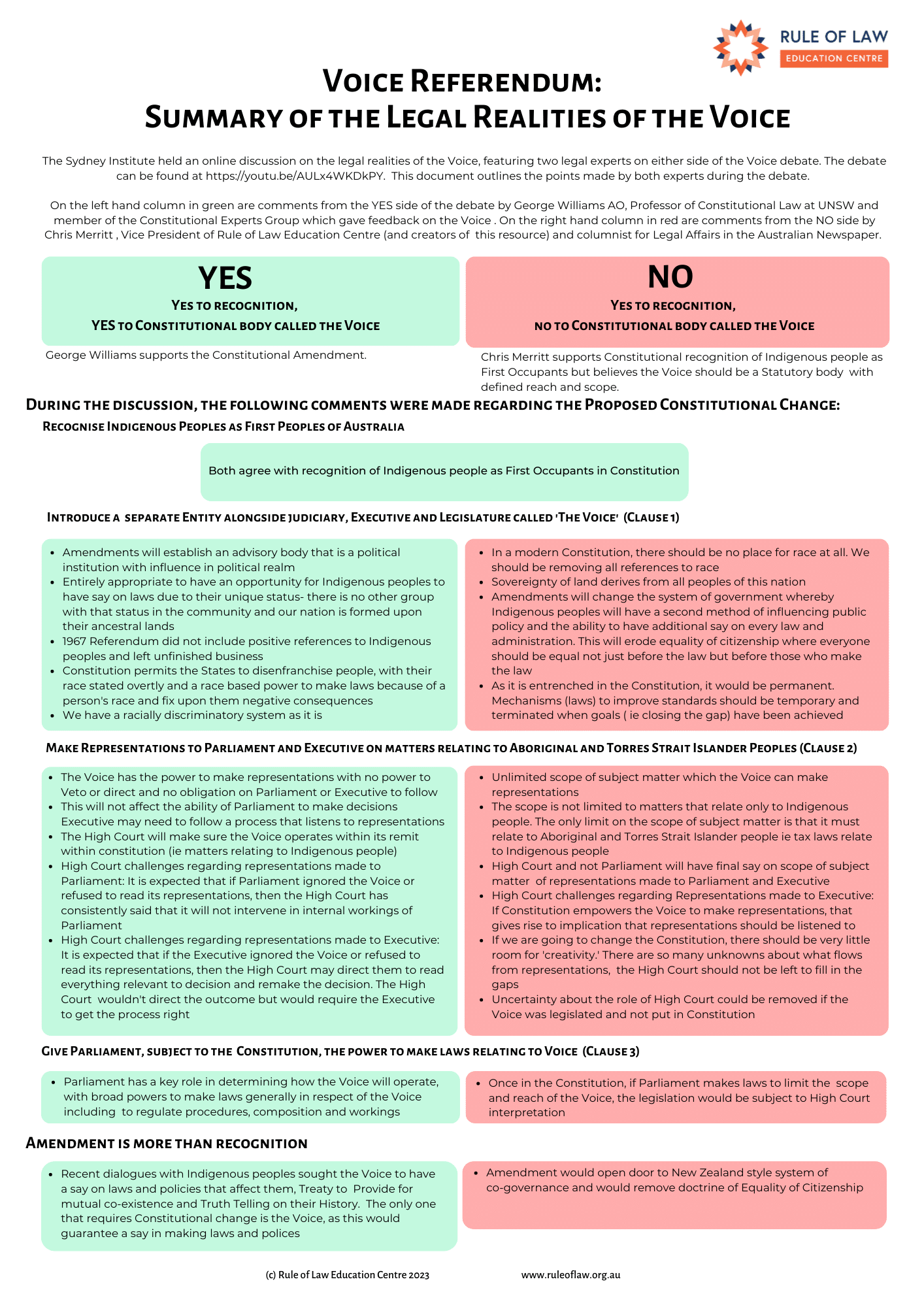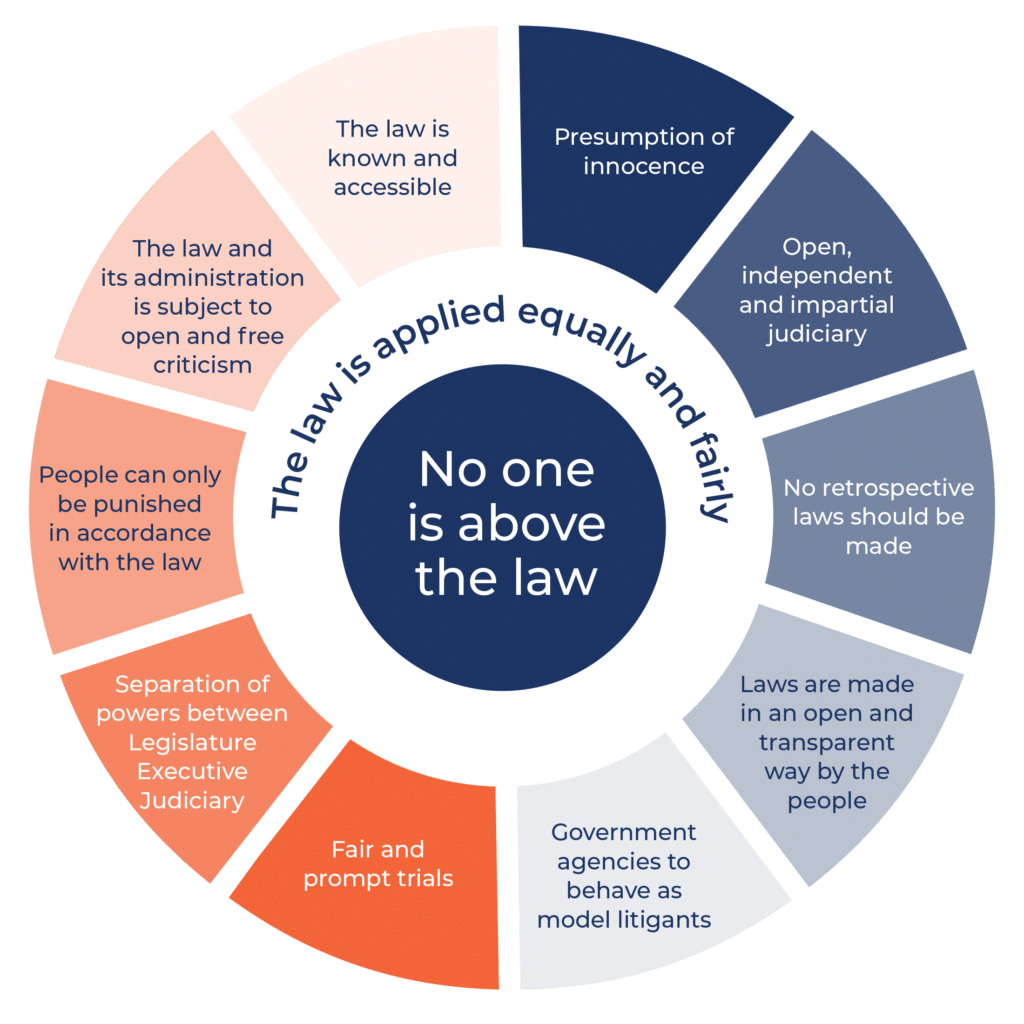If you are wondering what the 2023 Australian referendum is all about, why some people believe a change is needed to the Constitution and how the Voice to parliament will change the Constitution then you have found the right resource. This paper will consider what exactly is in the Australian Constitution, what the proposed change will be and what the legal experts say will be the implications of the change.
1. Before Changing the Australian Constitution
Before we make a change to the Australian Constitution, Australians need to understand what the purpose of the Constitution is, what are key features of government (including Separation of Powers and Division of Powers) are in the Constitution and why a referendum is necessary to change the Constitution. When we understand these fundamentals, we can make an informed decision about whether we will agree to make changes to our Constitution.
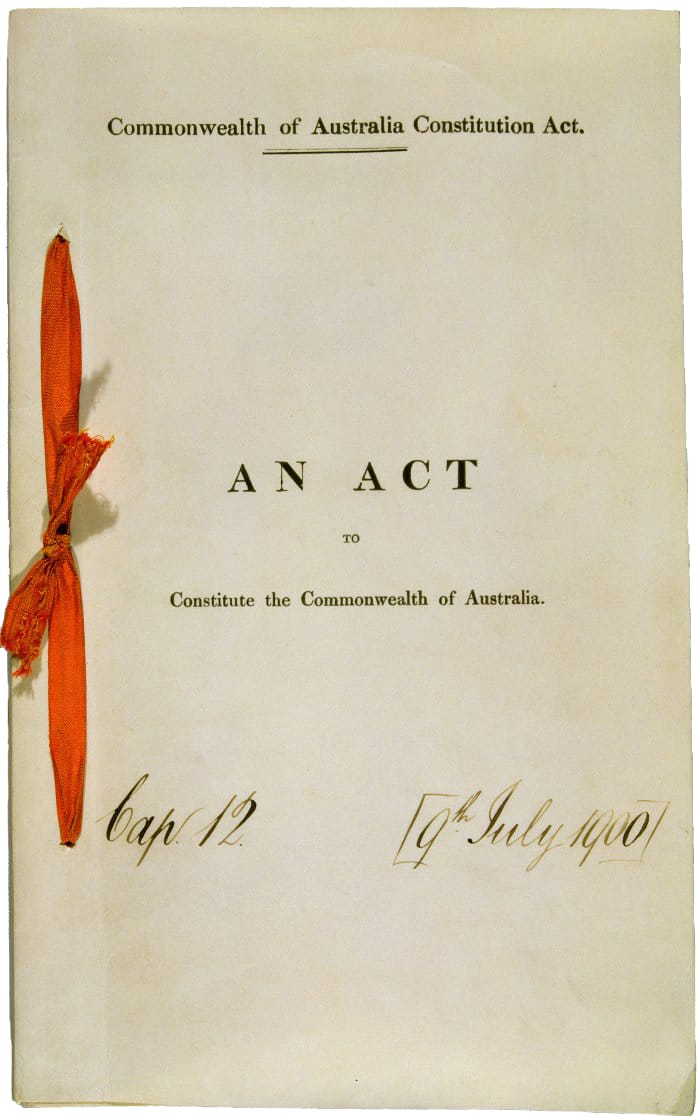
i. What is the Purpose of the Constitution?
The Constitution is a legal document setting out the ‘basic laws’ for the government of Australia.
After a series of conventions in the 1890’s, the Constitution was created by representatives of the then colonies. Before it came into effect on 1 January 1901, its terms were approved (with one small exception) by the people of New South Wales, Victoria, Queensland, Western Australia, South Australia and Tasmania. The Constitution took effect from 1 January 1901.
Although our Constitution was given legal effect by an Act of the British Parliament, in reality, the Constitution is a document which was conceived by Australians, drafted by Australians and approved by Australians. The British Parliament no longer has any power over Australia, and the Constitution’s power as a fundamental law of Australia relies on the Australian people’s decision to approve of and be bound by the terms of the Constitution.
ii. What is included in the Constitution?
The Act starts with a Preamble.
The preamble is a concise summary of the rationale and principles behind the Constitution and is often symbolic of the history and aspirations of a new nation.
The Australian Constitution highlights the colonial origins of the Act, that is, where people of the separate and self-governing colonies (now called the States) agreed to join together to UNITE and become a new nation, the Commonwealth of Australia.
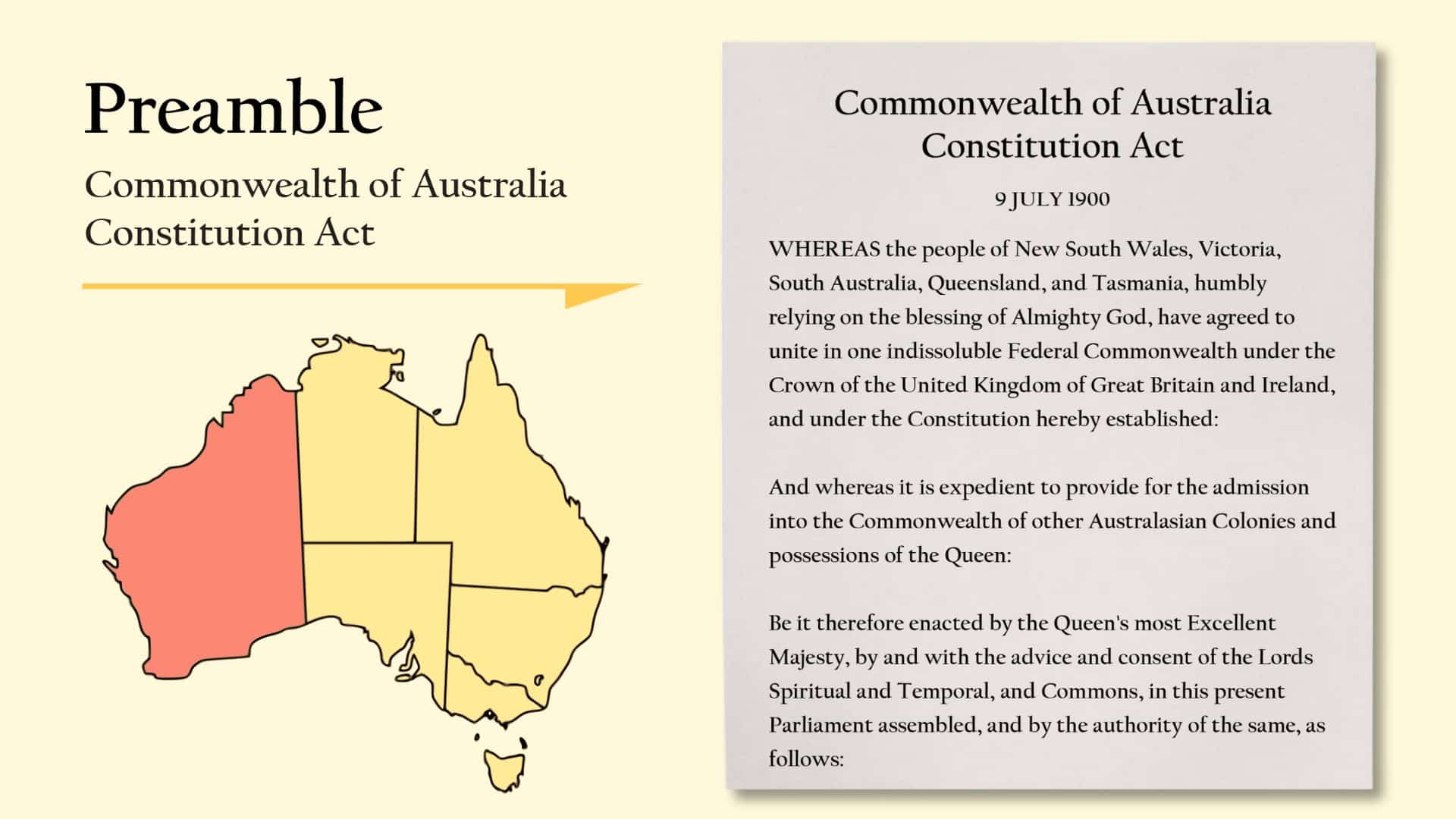
Western Australia is not in the original preamble proclaimed on 9th July 1900 as they were originally reluctant to join the Federation and did not hold a referendum on the question of federation until 31 July 1900.
Commonwealth is a medieval term, meaning that supreme power is vested with the people for their general welfare. It was was deliberately chosen to represent equality and the common good.
The Constitution was created with equality before the law deeply engrained in it and on the assumption that the rule of law would operate throughout Australia. The Constitution requires that the government obey the law and provides checks and balances to ensure that occurs.
iii. What are the key features of government under the Australian Constitution?
The Constitution is deliberately structured into chapters to create a legal and political system that governs Australia.
Rather than one central body holding all power, the Constitution is broken up into eight chapters to spread power between;
– the Federal and States Governments (called the Division of Powers); and

– the Legislature, Executive and Judiciary (called the Separation of Powers).
The Division of Powers ensures that all power is not held by one level of Government and the Separation of Powers ensures not one arm of government is more powerful than others.
Sections 51 and 52 (in Chapter I- The Parliament) limit the areas that the Federal Government can make laws about called Exclusive powers. These are predominately national Issues (eg defence and immigration).
The States can then make laws on all those areas not explicitly stated in the Constitution. We refer to these as Residual powers, and, as State governments are generally closer to the community and able to deliver services that meet the needs of their community such as health and education.
Section 109 (in Chapter V- The States) provides that if there is any conflict between State and Federal laws, the federal law will override the state law.
The Constitution is also structured to provide for Separation of Powers between;
– Legislative power in Chapter I- The Parliament, those who make the laws (ie our Members of Parliament who are representatives elected by the people of Australia),
– Executive power in Chapter II- The Executive Government, those who put the law into effect (ie those who administer the business of the government such as government departments and government ministers ); and
– Judicial Power in Chapter III- The Judicature- those who interpret the law and conclusively determine legal disputes (ie High Court judges).
Each of these powers must operate in accordance with the Constitution. By separating and putting limits on power, it ensures each body works within their area of responsibility as defined within the Constitution. This provides checks and balances to avoid power being held by one single body AND is instead distributed across the three bodies ultimately ensuring that it is the people who rule.
There is no mention of Prime Minister, political executive or Cabinet in the Constitution. However the Constitution was framed in accordance with many traditional legal and political conventions, not just the rule of law. One such convention under the Westminster system is responsible government.
iv. What is the role of the High Court in the Constitution?
The High Court is established in Chapter III, not only as the final Court of Appeal, but is charged with deciding disputes about the meaning of the Constitution.
The High Court is a powerful check that ensures the Legislature and Executive act within their roles as defined in the Constitution. In particular, section 75 requires officers of the Commonweath to act within the law. This is a key element to the rule of law, where all people, including those in power must follow the law.
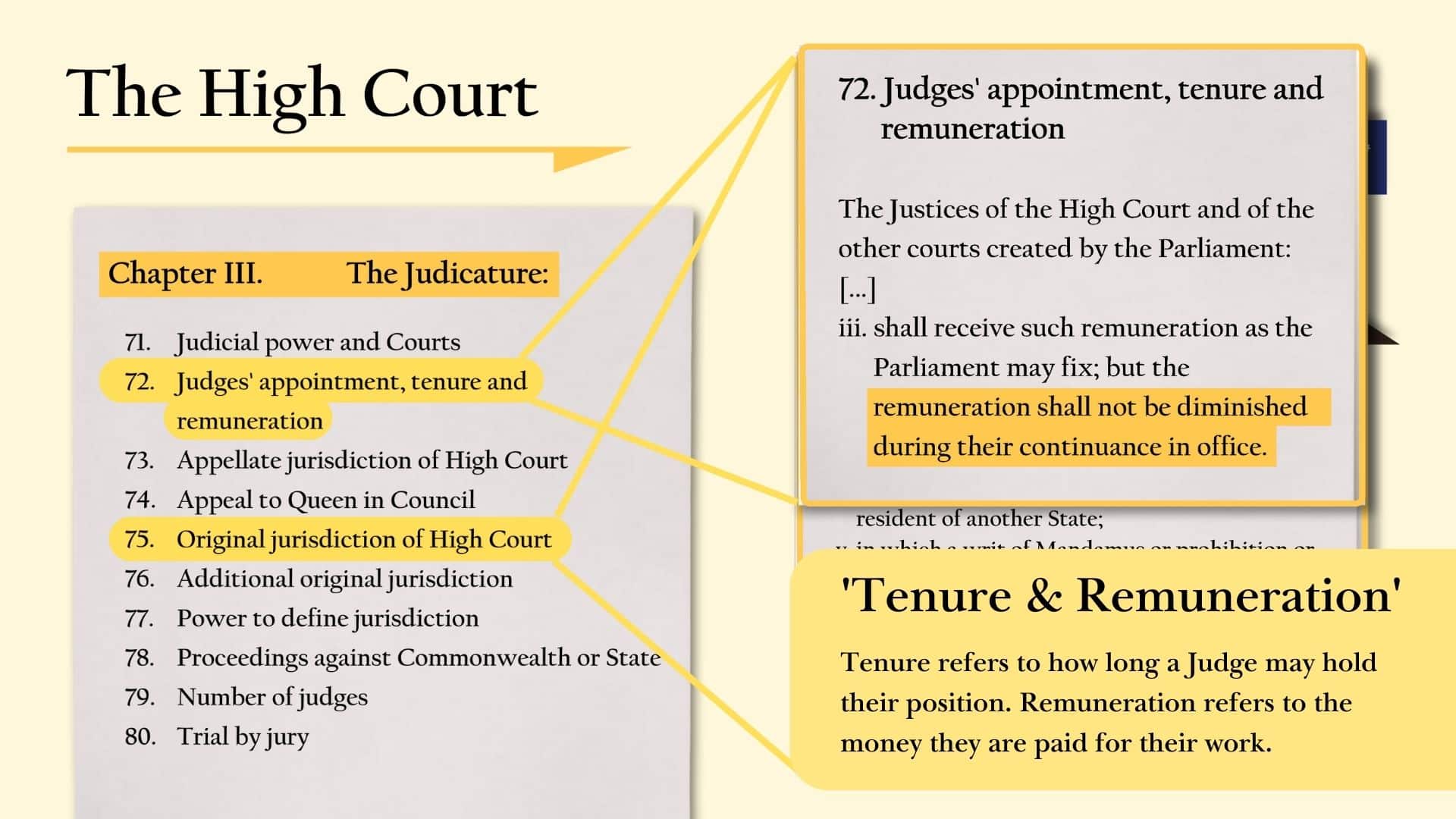
The Constitution provides for the two pillars of an independent judiciary, these being tenure (length of service) and conditions of service. By outlining the remuneration and length of service of the judiciary, it ensures the judiciary is not easily influenced by those in government and safeguards the impartial independence of the courts.
Any laws made must be consistent with the Constitution. The High Court takes into account the text and structure of the Constitution, particularly the division of distinct chapters when considering and interpreting the Constitution.
v. Why is a Referendum needed to change the Constitution?
The Constitution is the people’s document so it can only be changed BY the people.
It would not be good for the stability of our nation and system of government if those in power such as the government of the day, could easily change the Constitution to further their own political or personal interests. As a result, the Constitution has outlined a specific process in Chapter VIII- Alteration of the Constitution that is required to get the consent of the people before the Constitution can be changed (known as a referendum).
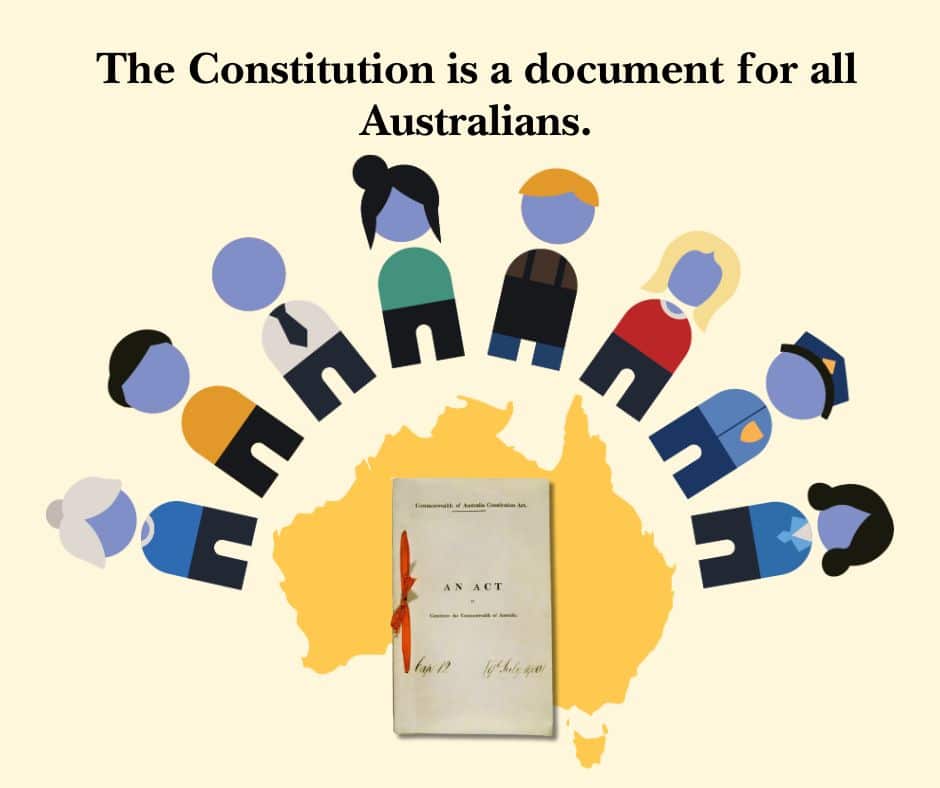
The required elements needed to change the Constitution are:
The proposed change must be passed by majority of both house of Federal Parliament
The majority of Australians must vote in favour (ie more than 51% of the voting age population)
The majority (4) of 6 states must have a majority of voters in favour.
This is called a Double Majority.
Changing the Constitution is deliberately a difficult process to protect our foundational document and ensure that it is the people of Australia who decide whether they are in favour of making any changes.
vi. Does the Australian Constitution include a Bill of Rights?
The Australian Constitution is a mechanical document that outlines the allocation of power and responsibilities between the federal and state governments and sets up the three branches of government.
Because the creators of the Constitution believed our rights were best protected by a parliamentary democracy, it does not contain a Bill of Rights and only contains a few express rights. These are
- the right to trial by jury on indictment for offences against Commonwealth laws— s 80;
- The right to freedom of religion— s 116;
- the right not to be subject to discrimination on the basis of the state where you live— s 117, and
- the right to protection against the acquisition of property on unjust terms – s51(xxxi)
Some implied rights are also identified, for example, freedom of political communication and the right to vote.
Unlike the United States of America’s Constitution, the Australian Constitution does not contain a Bill of Rights with clauses such as the right to bear arms.
2. How will the Voice to Parliament change the Australian Constitution?
It has been proposed that the Australian Constitution needs amending to recognise and respect the Aboriginal and Torres Strait Islander peoples and to provide a permanent mechanism to listen to Indigenous peoples about matters that affect their lives so they can improve their outcomes and ‘close the gap’.
The question that will be put to voters in the 2023 Referendum is whether to vote YES or NO to adopt the proposed law, the Constitution Alteration (Aboriginal and Torres Strait Islander Voice) 2023 Bill, that will alter the Constitution by inserting a new chapter, Chapter IX—Recognition of Aboriginal and Torres Strait Islander Peoples.

i. Will the Proposed Amendment recognise Indigenous Peoples in the Preamble?
The Voice proposal will not include a change to the preamble, like the failed 1999 Referendum that proposed to recognise First Australians in the preamble to the Constitution.
Instead, the Voice will be a separate chapter in the Constitution, establishing a new body called ‘The Voice’ alongside other major institutions established by the Constitution such as the Parliament, Executive and Judicature.
ii. There is considerable debate about the impact of the proposed Voice
As outlined in the Australian Government’s Official Yes/ No Case Pamphlet there are arguments on both sides of the debate for voting YES or NO. Voting is compulsory and no one is forced to vote a particular way.
It is up to each individual Australian to make an informed decision about whether they wish to make this change to the Australian Constitution.
There has been significant disagreement among legal experts regarding the legal implications about the reach and powers of the Voice that form a new Chapter within the Australian Constitution.
It is up to each individual Australian to make an informed decision about whether they wish to make this change to the Australian Constitution.
There has been significant disagreement among legal experts regarding the legal implications about the reach and powers of the Voice that form a new Chapter within the Australian Constitution.
To find more details, we encourage you to watch the YouTube from the Sydney Institute on the Voice Referendum outlining the legal arguments for and against the voice on YouTube.
George Williams & Chris Merritt at the Sydney Institute, The Voice to Parliament: The Legal Realities.
iii. YES: Legal opinions in favour of the Voice
The legal opinions in favour of the Voice proposal- the YES side, have said the amendment is a result of extensive consultation with Indigenous people who wish to be Recognised in the Constitution as the First Peoples of Australia by having a VOICE that has a say on law and policies that affect them, treaty and truth telling. Of these, only the VOICE requires constitutional change. This amendment is said to be a modest change to the Constitution with a body that can only provide advice to Parliament and the government.
As further detailed by by George Williams, the amendment will provide:
1. RECOGNITION IN THE CONSTITUTION
“This is an act of recognition to ensure that Indigenous Australian are included in the nation’s founding documents while affirming their status as the first peoples of Australia.”
2. LISTENING Leads to better outcomes
“As a result of dialogues with Indigenous peoples from across our land and waters, [Indigenous Peoples] sought three things; they sought a Voice that would enable them to have a say on laws and policies that would affect them, they sought treaties, to provide for mutual co-existence and thirdly they sought the process of truth telling to shine light on their history and to provide a basis for shared understanding of those three things – voice, treaty and truth. Only one requires Constitutional change and that is the Voice… to guarantee them a say in the making of laws and policies”
3. MODEST CHANGE TO CONSITUTION
The change establishes “an advisory body of Indigenous people able to make representations to Parliament and the government… The body will provide advice, and does not have a veto, nor can it mandate outcomes.”
“The High Court may be asked to ensure the Voice operates within its remit… the [High] Court has said repeatedly that it will not intervene in the internal working of Parliament.. The Courts are more likely to scrutinize the work of ministers and public officials [the executive]… Minsters and public officials who receive a representation from the Voice may need to read and consider that representation when they make a decision.”
“Parliament has the key role of determining how the Voice will operate.”
iv. NO: Legal opinions against the Voice are NOT against Constitutional Recognition
Many legal experts against this proposed amendment have said they support Constitutional recognition of Indigenous people but just not in the form that has been put forward in the proposed Bill.
They are concerned about the permanent impact this amendment will have on the Constitution and equality of citizenship in Australia.
v. NO: Legal opinions against the proposed amendment to change the Constitution by inserting a new Chapter
The legal opinions against the Voice proposal- the NO side have said the amendment is significant as it adds a new chapter into the Constitution that will divide Australians, giving Indigenous Australians a permanent and additional method of influencing public policy. The scope and impact of the Voice is uncertain and the long term impacts on our system of government are unknown.
As detailed further by Chris Merritt, the amendment is:
1. DIVISIVE (opposite to Equality)
“We are asked to make a major change to our system of governance by inserting a new chapter into the constitution where it will sit alongside the chapters dealing with parliament, the executive and the judiciary. This is not modest nor is it symbolic.. the real purpose of this referendum is to change our system of government by injecting a permanent element of racial privilege into the heart of the Constitution.. that would kill the doctrine of equality of citizenship.”
“There is no requirement for the Voice to be limited to matters that relate ONLY or SPECIFICALLY to ATSI people.. there is no limit at all because Indigenous people, like all citizens, can be affected by all laws and policies.”
2. PERMANENT
“It would give Indigenous Australians – and their descendants for all time- a second method of influencing public policy that goes beyond the benefits of representative democracy that are already enjoyed by all citizens regardless of race.”
3. RISKY and UNKNOWN
“Once a provision is inserted into the Constitution, its meaning and the resulting implications become the ultimate responsibility of the High Court.”
“If we are going to Constitutionalise a new institution we need to have more detail- rather than just a ‘let’s do the right thing’ proposal… A lot of uncertainty can be removed by legislating the Voice right now. Create a statute based body, see how it goes and get a track record in place before we add it to the Constitution.
3. It is up to Australians to decide …
At the end of the day, the CONSTITUTION is a document for all Australians that sets out the basic laws of governance in Australia.
As Sir Philip Fysh, former premier of Tasmania, said in 1897:
“We have cleared the way to federate as one people, and we are a united people, so soon shall we forget that we live not for ourselves only, but for others, and for the great country to which we belong.”
Our Constitution has a past and a future; it does not merely exist in the present. It is the basic law of Australia and it is up to us to decide in the referendum what we want the ‘rulebook’ for Australia to look like.
This resource is authorised by Chris Merritt of the Rule of Law Education Centre, Sydney.
Further Resources of Both Sides of Debate
- Australian Electoral Commission Yes/ No Case Pamphlet
- Sydney Institute and legal realities of the Indigenous Voice to Parliament on Youtube
- Centre for Independent Studies: Does Australia need a voice to parliament on Youtube
- Sky News: The Voice Debate on Youtube
- IPA Youtube: Help students understand and develop knowledge of both side of the argument on the Voice
- SA University and Legal Literacy for the Constitution https://www.referendum-voice.com.au/
- Tomorrows Teacher https://tomorrowsteacher.education/blog/the-voice-referendum-teacher-resource

